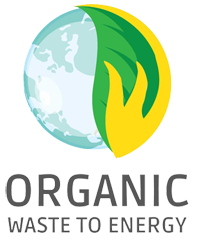Anaerobic is a good alternative than aerobic composting ?
- Requires a lot less work than aerobic composting.
- Produces more usable humus per volume of original composting ingredients compared to aerobic composting.
- Finished product contains higher levels of ammonium, since anaerobic microbes tend to use less nitrogen than aerobic microbes.
- Process of organic food waste anaerobically produces biogas (e.g. methane and carbon dioxide), which can be captured and used for energy/fuel.
- Anaerobic digestion requires musch less space to build the digester and the storage tanks.
- Avoid potentially smelly, or pest-attracting kitchen waste that you’d accumulate day after day.
- Compost products do exist excessively in the market while organic liquid fertilizer is still relatively new..
What is anaerobic digestion?
Anaerobic digestion is the natural process in which microorganisms break down organic matter in the absence of air (an anaerobic environment). Anaerobic digestion creates usable products such as biogas and digested material.
What is digested material and what is it used for?
Digested material is the solid and liquid material that remains at the end of the anaerobic digestion process. Digested material contains valuable nutrients (nitrogen, phosphorus and potassium) and organic carbon. Typically, raw digested material is processed into a wide variety of products like fertilizer, compost, soil amendments or animal bedding. Factors influencing what products are made include the makeup of the initial feedstocks and local markets. These co-products can be sold to agricultural, commercial and residential customers.
If I build a biogas system, will it stink?
Biogas contains a small amount of hydrogen sulfide, which has a rotten-egg odor. However, anaerobic digesters are completely enclosed and biogas is not released directly to the air. Digesters are commonly installed at farms to reduce odors. What comes out of a digester after processing is much less odorous than the feedstocks that go into digesters.
What are the benefits of organic liquid fertilizer?
- Increases organic matter content;
- Reduces the need to apply chemical fertilizers
and pesticides; - Improves plant growth;
- largely used in hydroponic agriculture;
- Reduces soil erosion and nutrient runoff;
- Increases the soil’s water retention ability, which reduces the need for irrigation.
- Helps plants when they need a quick boost because plants quickly absorb liquid products espcially if applyied directly to their leaves (foliar feeding).
What is an anaerobic digester?
Anaerobic digesters are built systems (lagoons or tanks) where anaerobic digestion takes place. Anaerobic digesters manage organic wastes, produce gas and digested materials, minimize odors, reduce pathogens, and reduce solid wastes. Anaerobic digesters are also called “anaerobic digestion systems”, “biodigesters” or simply “digesters”.
How does biogas help reduce effects of climate change?
Biogas is made up of methane and carbon dioxide, which are powerful greenhouse gases. Anaerobic digesters are designed to capture these gases so they do not escape to the atmosphere. In most cases, the feedstocks used in digesters would have released methane directly as they decomposed in lagoons or landfills. In addition, using biogas for heat or electricity means that less energy needs to be produced by power plants. This reduces the amount of carbon dioxide emitted to the atmosphere by burning fossil fuels.
Are anaerobic digesters safe?
A properly designed and operated system is very safe. Anaerobic digesters are designed to meet local and national codes for safety. However, they do produce methane and hydrogen sulfide. These gases both burn easily and are harmful to inhale, so it is essential to use proper gas-handling precautions. It is also important for plant operators to be well trained and follow established operational procedures.

